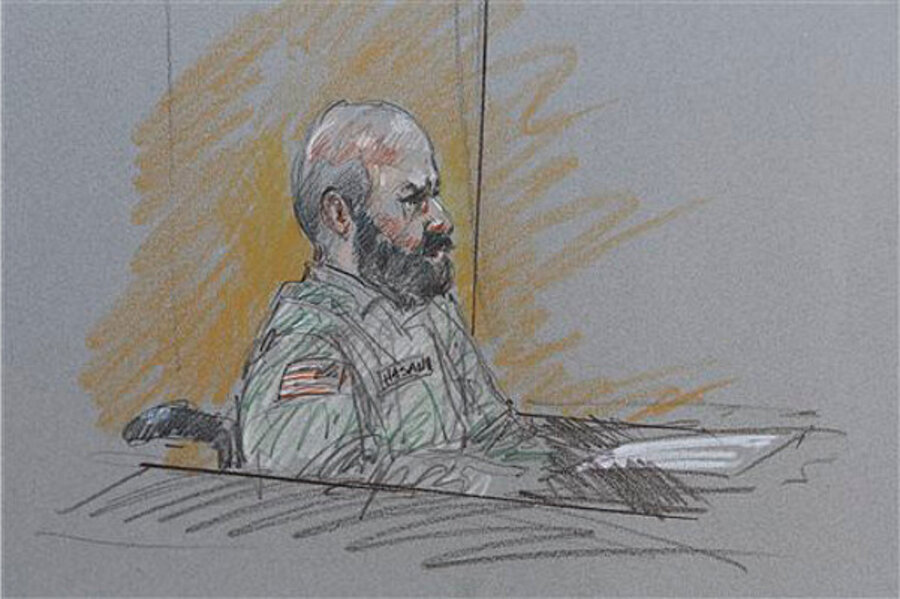Fort Hood shooting trial: Details emerge about victims, shooter
Loading...
| FORT HOOD, Texas
One of the soldiers killed during the 2009 shooting rampage at Fort Hood suffered a dozen gunshot wounds that indicate he was trying to charge the gunman, while another victim was pregnant, medical experts testified Thursday.
The two were among 13 people killed when a gunman opened fire inside a crowded medical building at the sprawling Army post in Texas on Nov. 5, 2009. The accused shooter, Maj. Nidal Hasan, also is accused of wounding more than 30 people as he stands trial for the worst mass shooting ever on a U.S. military base.
Spc. Frederick Greene was shot 12 times during the attack, Lt. Col. Phillip Berran told the judge after reviewing photos of the soldier's body before jurors were led into the courtroom at Fort Hood. When asked by a prosecutor if his findings were consistent with Greene "charging the shooter," the pathologist responded: "Yes, it is."
Prosecutors chose not to introduce the photos as evidence.
Another victim, Pvt. Francheska Velez, was shot once by a bullet that fractured her rib and went through her heart and right lung — a wound that wasn't survivable, said pathologist Col. AbuBakr Marzouk.
When asked if the 21-year-old Chicago woman had any other significant medical conditions, Marzouk replied: "She was pregnant."
Witnesses testified earlier in the trial that they would hear Velez crying out, "My baby! My baby!" during the shootings.
Berran also described how Pfc. Aaron Nemelka, who was shot three times, was likely shot while lying on the ground. That means at least five victims were shot while lying down, according to testimony from several pathologists this week.
A former colleague of Hasan testified about how he identified the wounded Army psychiatrist in the chaotic moments following the shooting, including the shooting of Hasan by police.
"I had no way to medically evaluate his condition," said retired Maj. Clifford Hopewell, who was chief of the traumatic brain injury division at Fort Hood. "I thought he was dead. He was prone on the ground and wasn't moving."
Hopewell said he thought he heard semiautomatic weapons fire, looked outside and heard screams and people running toward his building in the same complex where the gunfire broke out.
Hasan was lying on the ground near a telephone pole, he said, using a diagram while on the witness stand.
"A lot of people were on the ground in that area, but that's where he was," Hopewell said.
Asked by the prosecutor, Maj. Larry Downend, if the man he identified was in the courtroom, Hopewell replied, looking toward Hasan: "Yes. This person sitting right here.
"It's Nidal."
Hasan — who is acting as his own attorney — raised no objections and didn't question any of the witnesses Thursday, which has largely been his strategy since the trial began last week. The Army psychiatrist's lack of defense so far has allowed prosecutors to call more than 70 witnesses, indicating that the trial could wrap up far sooner than the monthslong timeline originally announced by the judge.
The military defense attorneys who have been ordered to help Hasan during the trial have accused Hasan of trying to convince jurors to convict him and sentence him to death. Hasan has disputed those claims, calling them a twist of the facts.
But he recently authorized the release of a report that shows he told military mental health experts after the attack that he "would still be a martyr" if he were convicted and executed by the government. The report was released by Hasan's civil attorney to the New York Times, which posted it online, but prosecutors were ordered by the judge not to read it.
If convicted, Hasan could face the death penalty.







